Are you looking for a way to create an ideal learning environment for your students? Setting up and maintaining a Montessori classroom in your school is an excellent way to foster independent, creative thinkers and equip them with problem-solving skills that will last throughout their lives.
Setting up a Montessori classroom can be an exciting and rewarding experience. It doesn't have to be overwhelming. As educators, it is important to create an optimal learning environment in order to nurture the development of children and encourage their natural curiosity.
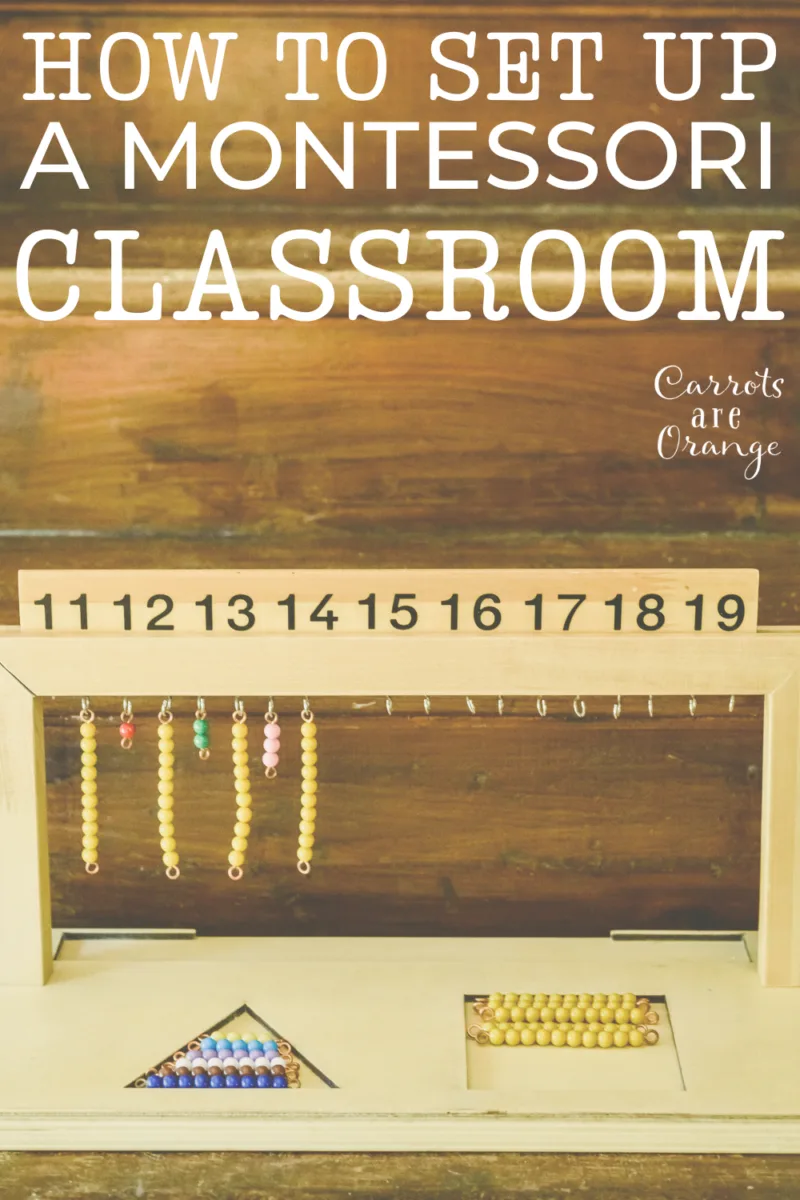
This article offers tips to help you set up a Montessori classroom that will help foster student engagement, independence, and exploration. This blog post provides the basics of what's needed to set up a Montessori classroom, from Montessori materials to classroom layout. For a high-level introduction to Montessori's prepared environment, check out this post: Montessori Theory: Prepared Environment
Read on for some helpful information about this innovative teaching approach and how best to implement it in your space.
How to Set Up a Montessori Classroom
Montessori classrooms are unique environments that foster learning and development in children. The setup of the classroom is essential in creating the right atmosphere, one that encourages exploration and growth.
#1 – Child Sized Furniture
To achieve this atmosphere, begin by considering the size of your room and the number of students. This will determine the type of furniture and materials you should provide in your classroom.
When designing a Montessori classroom, it's important to keep in mind that the furniture should be low enough for children to reach them, allowing them to explore on their own terms. In a Montessori classroom, furniture should not be too large, large, or bulky so as to allow children access to all areas of the room.
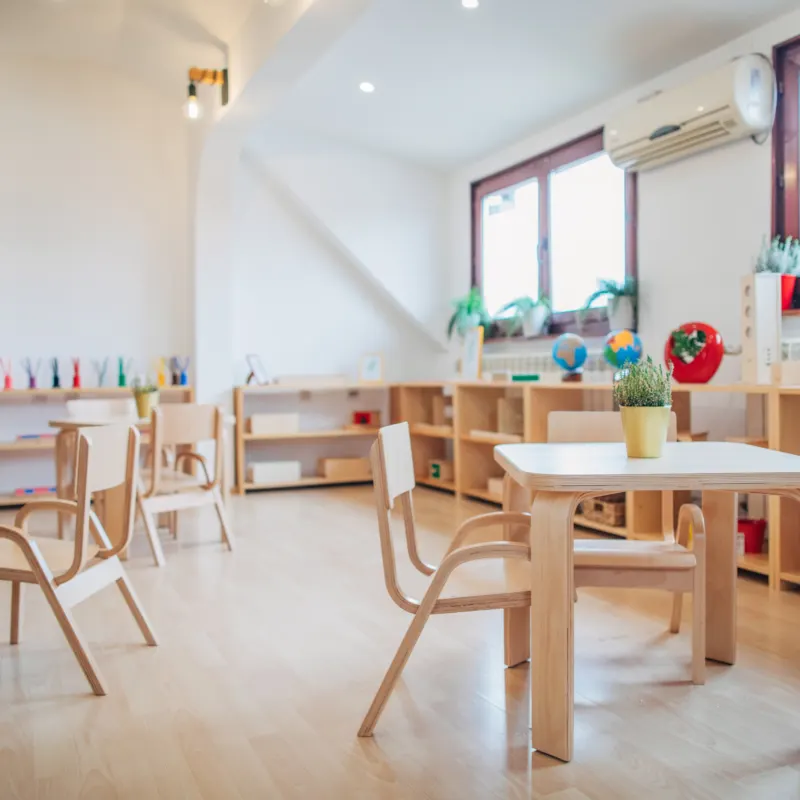
Try to look for furniture that has rounded edges and no sharp corners, such as small tables and chairs made from wood for children to move around comfortably. Additionally, choose shelves that are low enough for kids to reach, so they can easily select their own materials without needing help from adults.
#2 – Classroom Layout
In Montessori classrooms, teachers take on the role of guides rather than instructors by allowing children the freedom to explore at their own pace while providing assistance when needed. For this reason, it is important to establish boundaries within the classroom environment but still give your students space to make mistakes while exploring new concepts or ideas independently.
The main focus for a Montessori classroom is that students have access to different activities as necessary. So, it's important to create groupings of areas where students can freely explore on their own and learn collaboratively.

Additionally, the classroom should be arranged into the main learning areas – language, mathematics, sensorial, and practical life – so that materials can easily be accessed by students. Beyond the main learning areas, Montessori classrooms should be organized into specific zones where students can explore different activities, such as reading, life sciences, or art-making.
Keep in mind that there should only be one material for each Montessori activity. One pink tower, one set of knobless cylinders, and so on.
Once you have the necessary materials for your Montessori classroom, it is important to set them up in the most effective way. The setup of a Montessori classroom should create an environment that allows children to explore their interests and develop their individual skills.
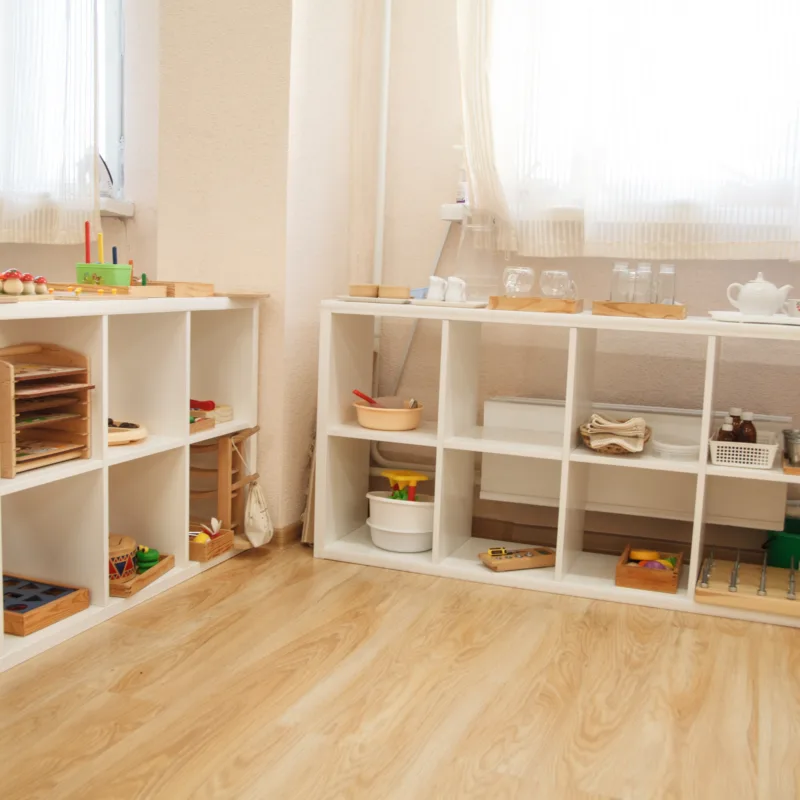
You should also consider creating intentional pathways, or lines of movement, that allow students to move around the room easily.
Make sure each area has sufficient supplies, such as paper for metal insets and colored pencils, and materials so students have plenty of options when engaging with their chosen activity. You should also create “workspaces” where materials can be stored after use and individuals have a designated spot for independent work time.
#3 – Accessories
You can further enhance your Montessori classroom by providing different colors and materials throughout the space. For example, add colorful rugs, baskets, low-hanging artwork, and plants to create an inviting healthy atmosphere. Additionally, make sure to include plenty of natural lighting, as well as windows that open to allow fresh air in.
It is equally essential to select decorative pieces such as rugs or curtains that are both aesthetically pleasing and functional – arranged in such a way that they don’t interfere with or limit movement within the room.
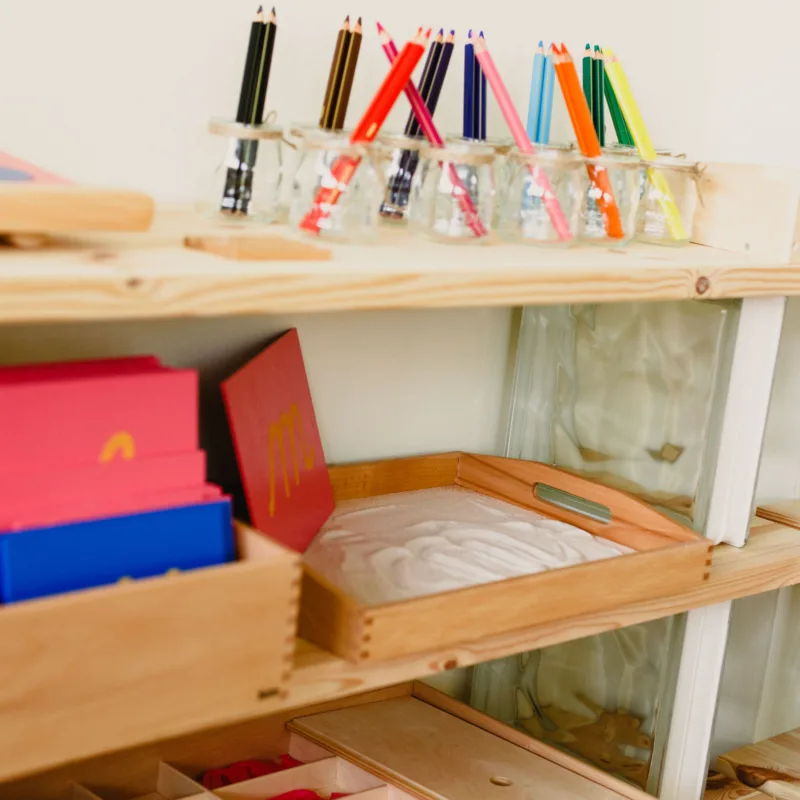
#4 – Labeling
Finally, keep organized by labeling all materials and areas of the classroom. This will help students stay oriented and find what they need quickly. Additionally, it can save you time when searching for materials or cleaning up after class.
By following these steps, you can create an effective Montessori classroom environment that is both inviting and organized. With these tips, your students will have plenty of room to explore, learn, and grow!
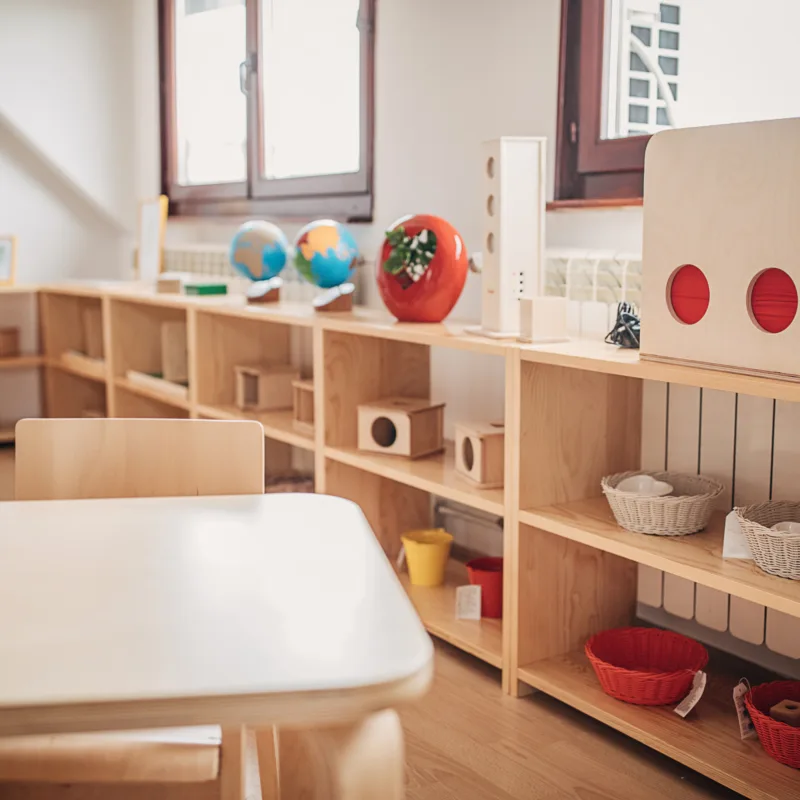
#5 – Storage
The space should also be organized with shelves and cupboards for storage of materials and equipment, as well as open shelving where items can be displayed and easily reached. All surfaces must also be child-proofed; any sharp edges or corners must be rounded off to ensure safety during playtime. Baskets are a great addition to aesthetics and organization.
#6 – Montessori Materials
The best part about setting up a Montessori classroom is stocking it with interesting materials! However, Montessori is expensive. When selecting resources for the classroom, it’s important to choose items designed specifically for Montessori activities such as manipulative materials for math lessons or natural objects for language activities.
You can purchase Montessori materials on Amazon but be sure to check authenticity. There are ways to create a Montessori classroom on a budget, especially for the Practical Life area. Don't stress too much but plan to make a significant investment.
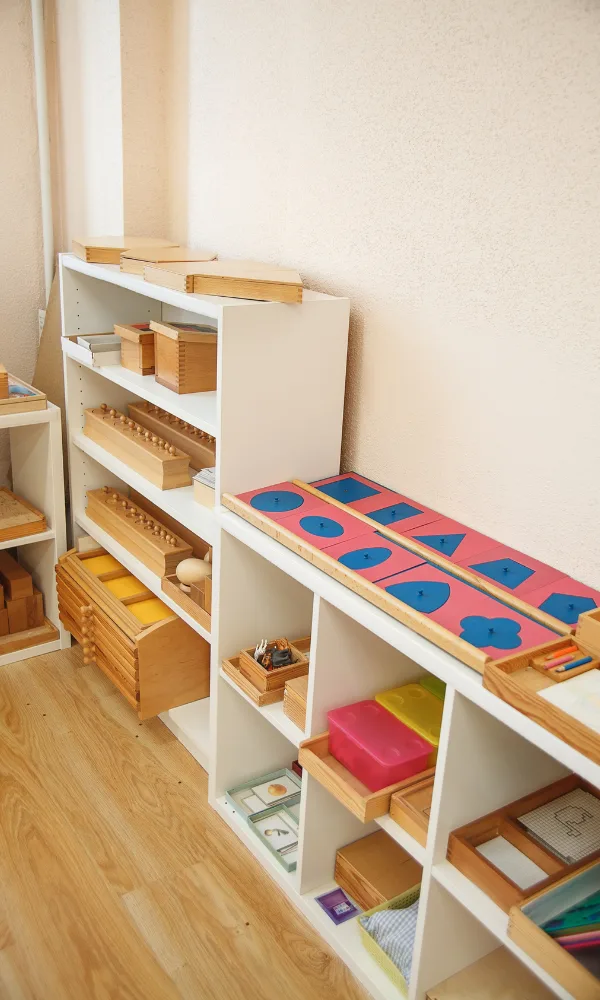
#7 – Outdoor Classroom
Furthermore, each Montessori classroom should have access to an outdoor space where children can explore nature or learn through gardening or other outdoor activities. This space should provide ample shade from direct sunlight while still allowing kids plenty of time outdoors each day.
#8 – Minimalistic Decor
Finally, it is important to remember that decorations hung on walls need not only be aesthetically pleasing but also educational – posters of plants native to your region together with maps can serve both purposes at once!
With these tips in mind, you will soon have an inviting Montessori environment that allows children freedom of movement and promotes creative thinking!
